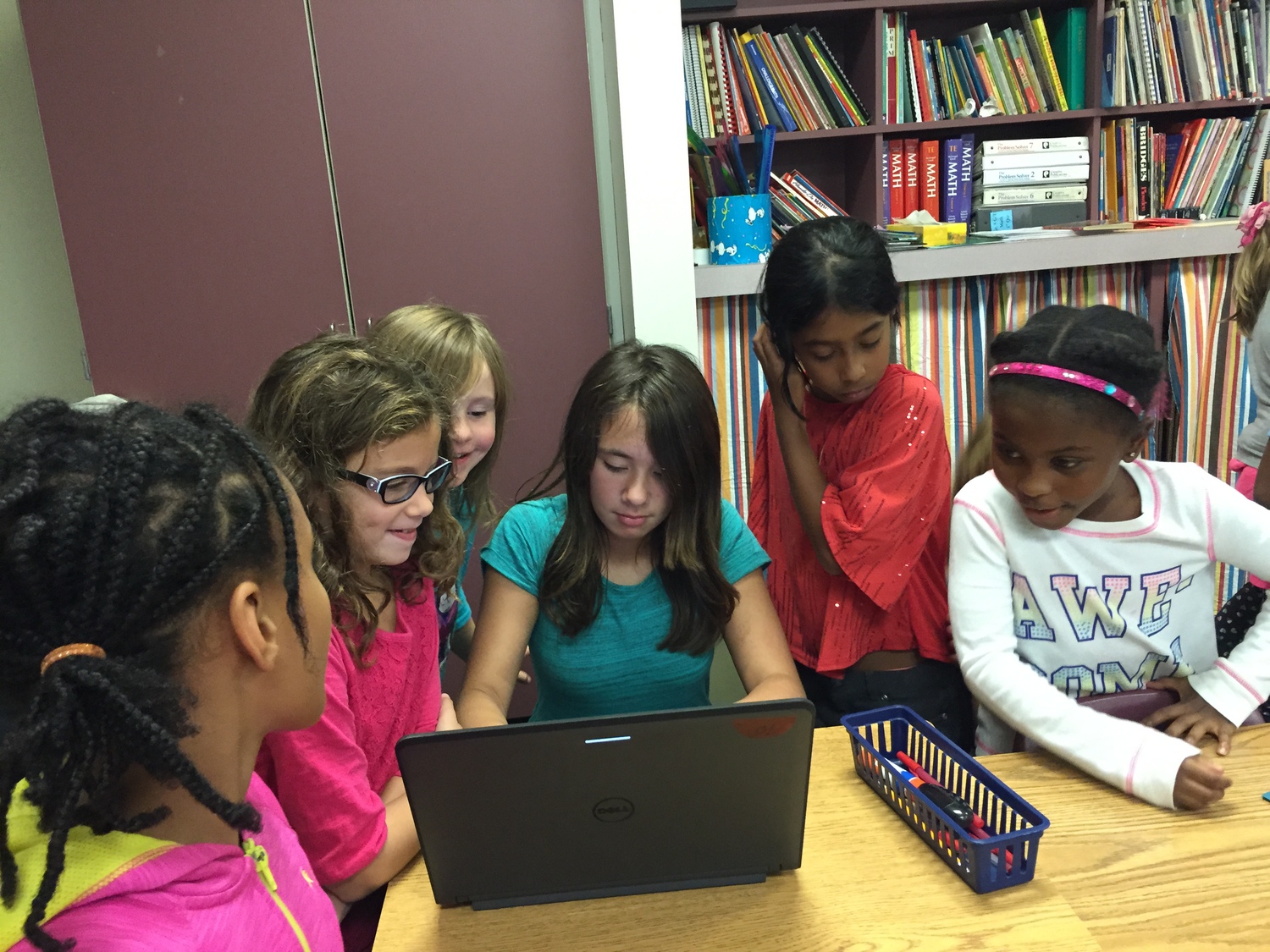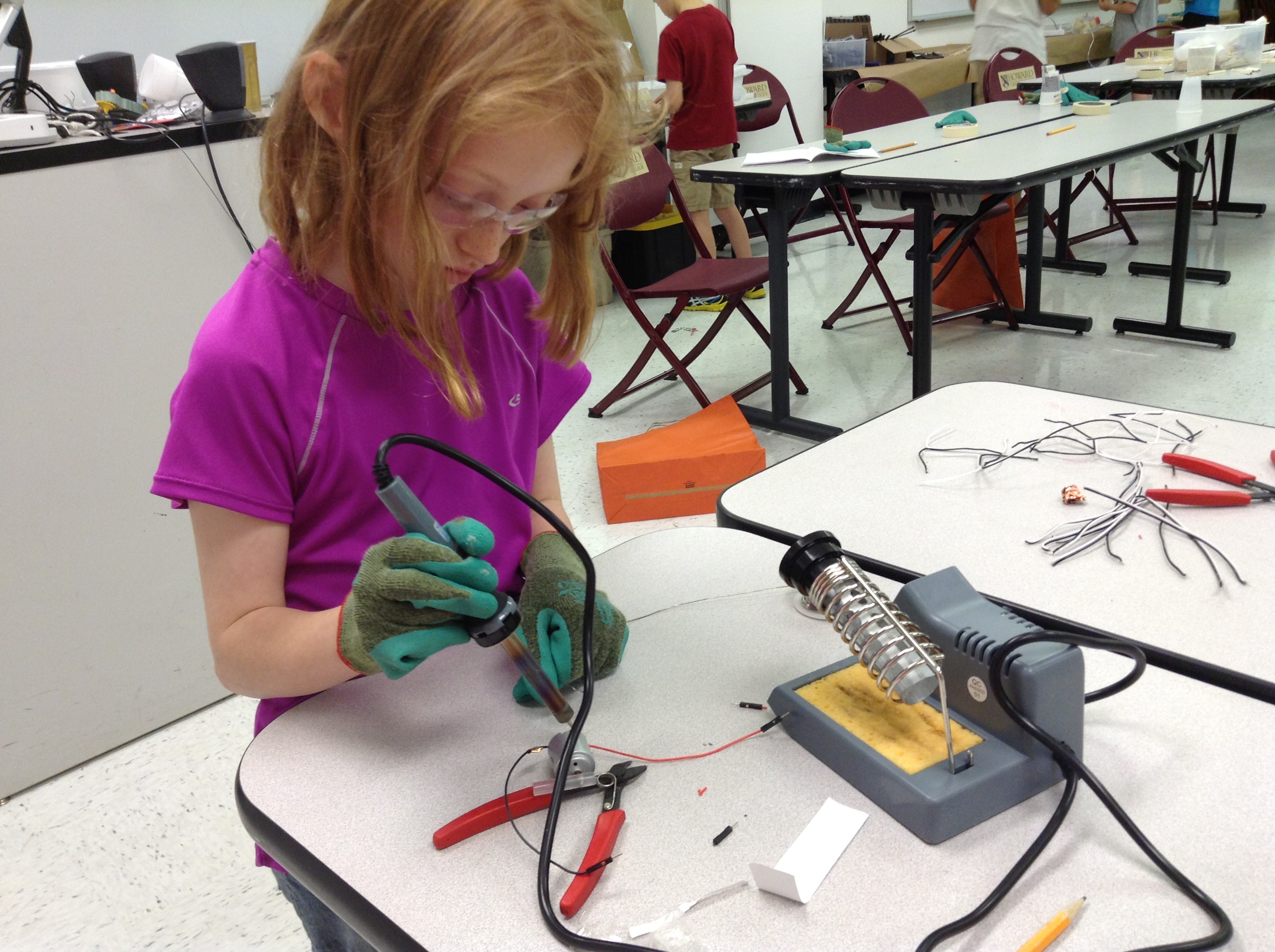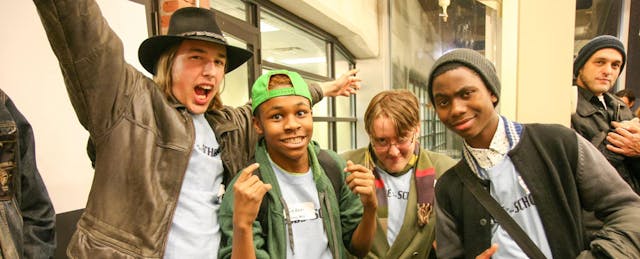“Schools kill creativity” has become a refrain heard around the world, thanks largely to Sir Ken Robinson’s now-famous TED Talk. But he may want to take a trip to Maryland, where a grassroot community of parents, teachers and technologists now offer homegrown programs to spark the Maker spirit through hands-on projects and Maker workshops, both in- and after-school.
Thanks to their efforts, more young Marylanders are learning how to code and take advantage of digital technologies to bring their ideas to life. Here’s just a small sampling of the organizations that have launched in the past few years:
HowGirlsCode: When Lisa Schlossnagle couldn’t find computer science opportunities for her daughter in Howard County, she organized a computer science club in her own home. Word spread, and in early 2014 she, along with Katie Egan, turned the club into an after-school program, HowGirlsCode, at Fulton Elementary School.
“We want girls to get excited about programming and see that it can be fun, creative, and they can collaborate with their friends,” explains Egan. “Girls gravitate to problem solving and creativity so we have built our instructional program to support that.”
Working with computer scientists, a high school science teacher and other industry leaders, the first cohort of 22 girls in grades 3 to 5 learned binary code, computational thinking, loops and conditionals, functions, programming Lego mindstorm robots, and online scratch programs. Now HowGirlsCode is in three schools and plans to expand throughout the district.

Code in the Schools: Launched in March 2013, this cross between Chess in the Schools and Code.org offers digital technology courses, workshops and “Game Jams” for minorities and girls in Baltimore City--two groups largely underserved and under-represented in computer science. Over 1,000 students participated in their courses during 2014.
“Students don't often get a chance to truly create things during the school day,” shares Executive Director, Gretchen LeGrand. “The process of using technology as a tool to make and create, rather than just to consume, teaches students to think laterally about problems, empowers them to try many solutions, and to learn from failure."
The Digital Harbor Foundation (DHF), founded in 2012, offers an after-school makerspace located in a formerly closed recreation center in Baltimore’s Federal Hill. At its recent Second Anniversary Showcase, DHF launched a Perpetual Innovation Fund to provide seed funds for clubs across the US to buy 3D printers for maker and other entrepreneurial activities. Ideally these clubs “pay-it-forward” when they’ve made enough profits so that other clubs can purchase their own equipment. Check out the work that one of the pilot Perpetual Innovation Fund recipients accomplished. (Applicants do not have to be affiliated with DHF to apply or participate in the program.)
Futuremakers focuses on building teacher capacity: “Any classroom can become a makerspace,” suggests CEO Matt Barinholtz, “if teachers are trained and supported by makers.” Since 2010, Futuremakers coaches have been makers-in-residence in K-8 schools, libraries and afterschool programs. This growing roster of 30-plus visiting experts bring design thinking opportunities for “small hands with big ideas” to work with traditional hand tools and digital fabrication equipment, with the goal of increasing teacher confidence and capacity.

“Our teacher partners want to be maker coaches,” continues Barinholtz. “We help them introduce their students to hammers and screwdrivers, wires and motors. We bring the skills, tools and technology to build foundations, and enhance existing programs through arts and maker education integration.” Building teacher capacity and connections with experts will become increasingly important as demand increases for more hands-on “maker” skills.
Baltimore STEM Robotics Center: What do you get when you bring together industry CEOs and teenagers passionate about robotics? The founder of the Baltimore STEM Robotics Center, Ed Mullin, pairs local business executives with student robotics teams that compete against one another in events dubbed “RoboCEO.” Today, robotics teams from Baltimore City and surrounding counties use the dedicated West Baltimore space for practice, competitions and workshops led by local coaches.
Mullin’s passion for robotics has led to the creation of a meaningful workforce development program. “We discovered that many of the sharpest engineering minds on these robotics teams are struggling to find part-time jobs working in fast food restaurants,” explains Mullin. “Our goal is to place any robotics team member in a high-quality internship in a local company.”
In addition to the robotics skills learned, students are encouraged to develop the soft skills needed to be successful in careers through workshops offered through the Robotics Center. The RoboCEO event also connects industry leaders with teenagers who may be prospective interns. (The next RoboCEO is scheduled for March 15.)
BoomSpace, launched in late 2014, may be a newcomer on the scene. But it has already notched a Baltimore Social Innovation Award for creating a pop-up makerspace incubator program in East Baltimore’s McElderry Park, primarily for adults between 18 and 24 years old. “We aim to be a ladder for socioeconomic mobility to low-income communities and communities of color that are excluded from the technology revolution,” explains Director Vincent Purcell.
Although advanced manufacturing and digital fabrication is one of the fastest growing sectors of the economy, low-income communities in areas like East Baltimore are often excluded because of barriers such as basic transportation needs, criminal background checks and education requirements.
“In a neighborhood where opportunities for meaningful employment are hard to come by, many youth turn to informal economies selling drugs, sex and stolen goods just to make ends meet,” shares Purcell. “We see these challenges as an opportunity: If you have the skills to hustle in the streets, you have all the skills you need to run a business.”
Other organizations behind maker community efforts include Jan Baum’s innovative work with 3D Maryland, and other workshops and events offered at Betamore, Baltimore Node, Baltimore Foundry, Catylator Makerspace, FabLab Baltimore and the Baltimore Under Ground Science Space (BUGSS).
Each of these organizations fills a niche that builds on each other’s work creating an interwoven and robust maker community that supports the larger EdTech Maryland community. The most successful of these organizations are those that leverage community partnerships with schools, business leaders, universities, foundations and with each other.


